The ARRI ALEXA 35 offers 19 recording formats. In order to explain the logic behind these formats, ARRI has published a poster describing the formats and their potential implementations in the industry. Check it out below.
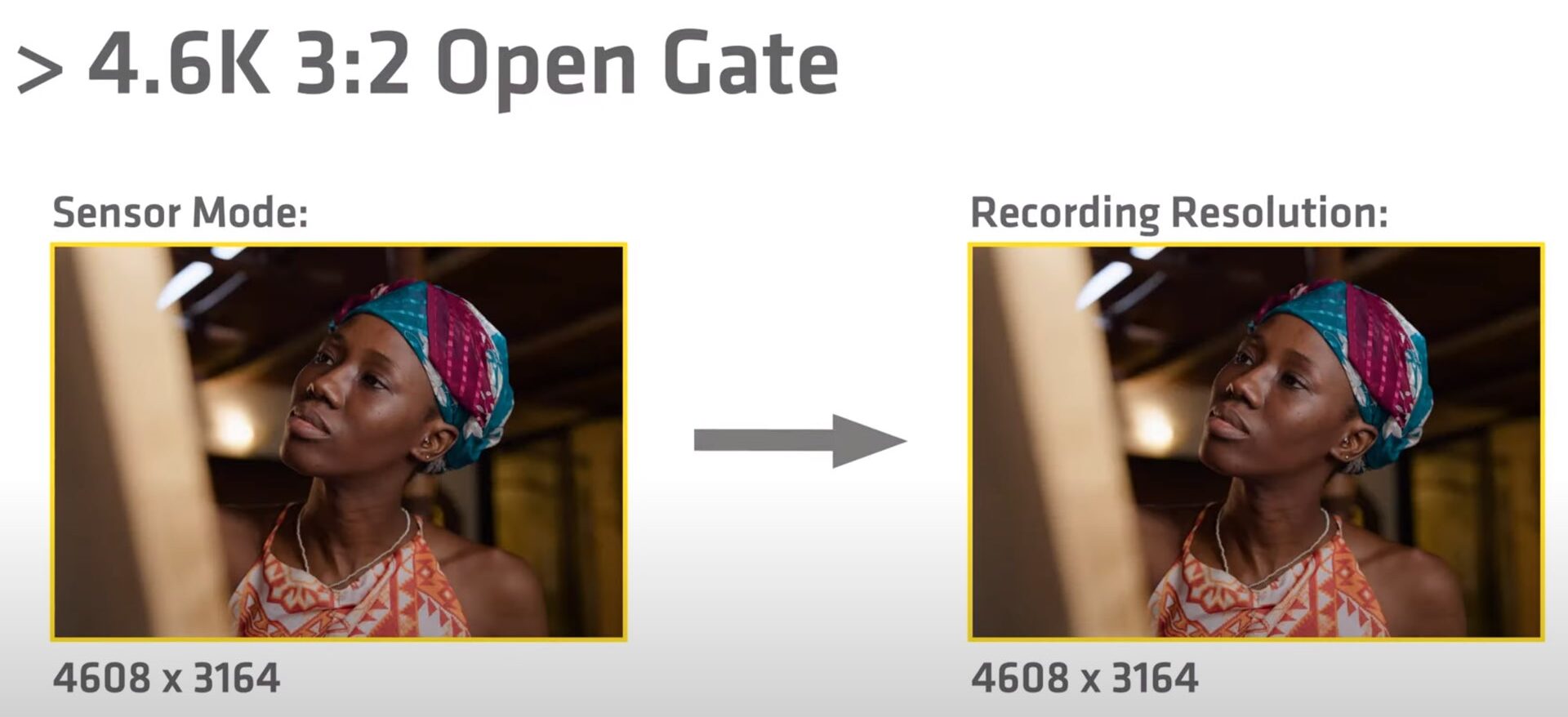
ARRI ALEXA 35: 19 recording formats
The ARRI ALEXA 35 offers a total of 19 ARRIRAW and Apple ProRes recording formats, incorporating efficient in-camera downsampling and anamorphic de-squeezing, which allow you to optimize data rate, resolution, and other parameters, based on your individual needs. Senior Product Manager Marc Shipman-Mueller says that these 19 recording formats are designed on an extensive industry survey. “The interesting thing we found was that different people wanted very different things. Some wanted to maximize the data rate, others wanted to maximize the image circle, and yet others wanted the top frames per second. So we designed these 19 recording formats to make sure that every production can find just the recording format they need”. Check out the ARRI Tech Talk video below which further elaborates on the recording formats and their utilizations in the industry:
ARRIRAW and ProRes
To simplify, you can record in the ALEXA 35 in ARRIRAW or Apple ProRes. ARRIRAW is the uncompressed, unencrypted, and ‘un-compromised’ sensor data format that gives you the maximum image quality. It gives you the greatest flexibility in post and is really best for future archiving, which is why a lot of the streamers right now are pushing for it (The ALEXA 35 is Netflix Approved). Furthermore, with high-density encoding downstream, the file size can even be reduced by 40 percent. Apple ProRes, on the other hand, is a compressed image data format. Below you can explore the list of all 19 recording formats of the ALEXA 35. Note that the ‘Sensor mode’ defines the area on the sensor that is captured, which is important to figure out if the image circle of your lens actually covers.
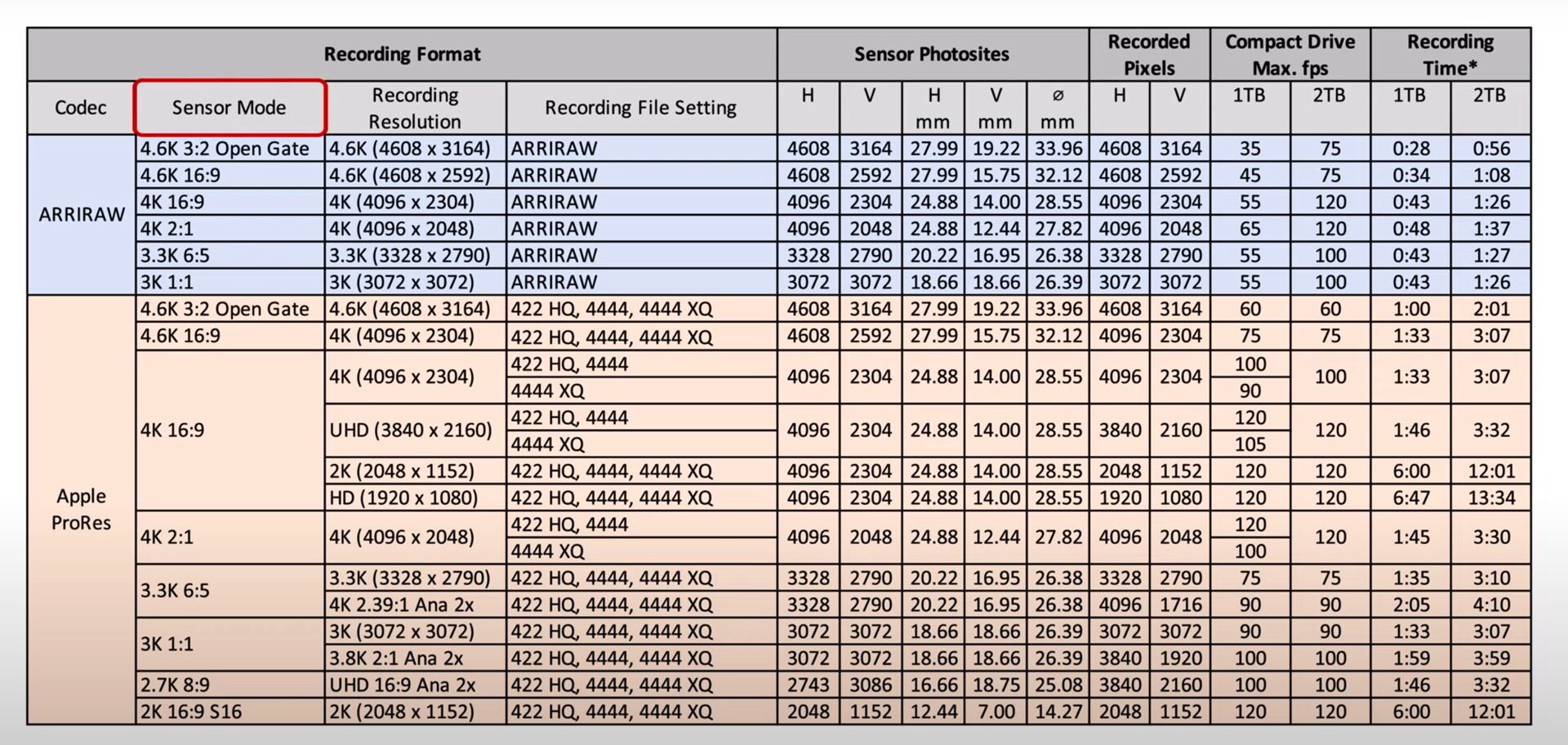
Sensor Modes
Open Gate: You may have heard this definition before. All starts from Open Gate. As stated by ARRI: “If you can afford it, Open Gate is the best and easiest recording format. It gives you maximum image quality, maximum image area, and maximum resolution. Open Gate works great for spherical and anamorphic lenses, and many shows use Open Gate and then they create custom frame lines inside, in order to use the rest as padding, which is great for visual effects, resizing repositioning, stabilizing, or tracking. The Open Gate has a relatively large sensor area, so you should make sure that your lens image circle covers the Open Gate”.
From Open Gate you can ‘cut’ the sensor according to your criteria as follows:
- 4K 16:9 – Mimics the traditional film spherical Super 35 format for maximum lens compatibility. Multiple in-camera downsampling options provide lower data rates.
- 3.3K 6:5 – For projects using 2x anamorphic Super 35 lenses for a target deliverable of 2.39:1. Negates the necessity of cropping 4:3 footage and fulfills 4K mandates.
- 2.7K 8:9 – For projects shooting with 2x anamorphic lenses for a target deliverable of 16:9, fulfilling 4K mandates. De-squeeze applied in-camera.
- 4.6K 16:9 – Full sensor-width recording in a 16:9 format that suits many spherical Super 35 and all large-format lenses, with room for flexibility in post. Lower data rate than Open Gate.
- 4K 2:1 – Designed for shooting with all spherical Super 35 and large-format lenses for a target deliverable of 2:1, fulfilling 4K mandates.
- 3K 1:1 – Designed for shooting with 2x anamorphic lenses for a target deliverable of 2:1, fulfilling 4K mandates.
- 2K 16:9 S16 – Mimics the traditional Super 16 format for use with Super 16 lenses or as an in-camera center crop.
To sum it up, explore the slide below which is pretty self-explanatory with all these possibilities. Click on the image for a full-resolution view:
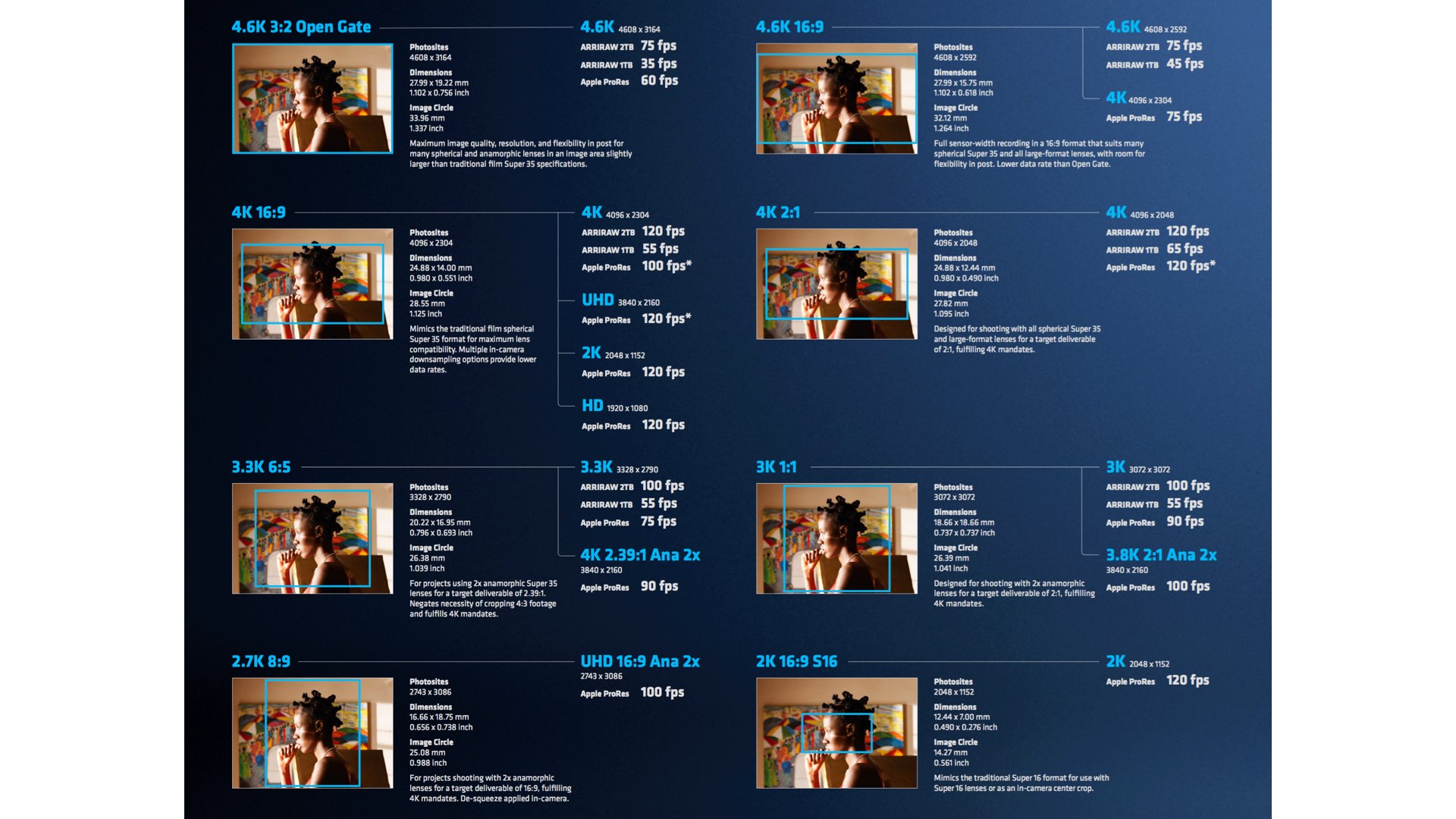
The ALEXA 35 Recording Formats poster can be downloaded from this link. Happy shooting 🙂


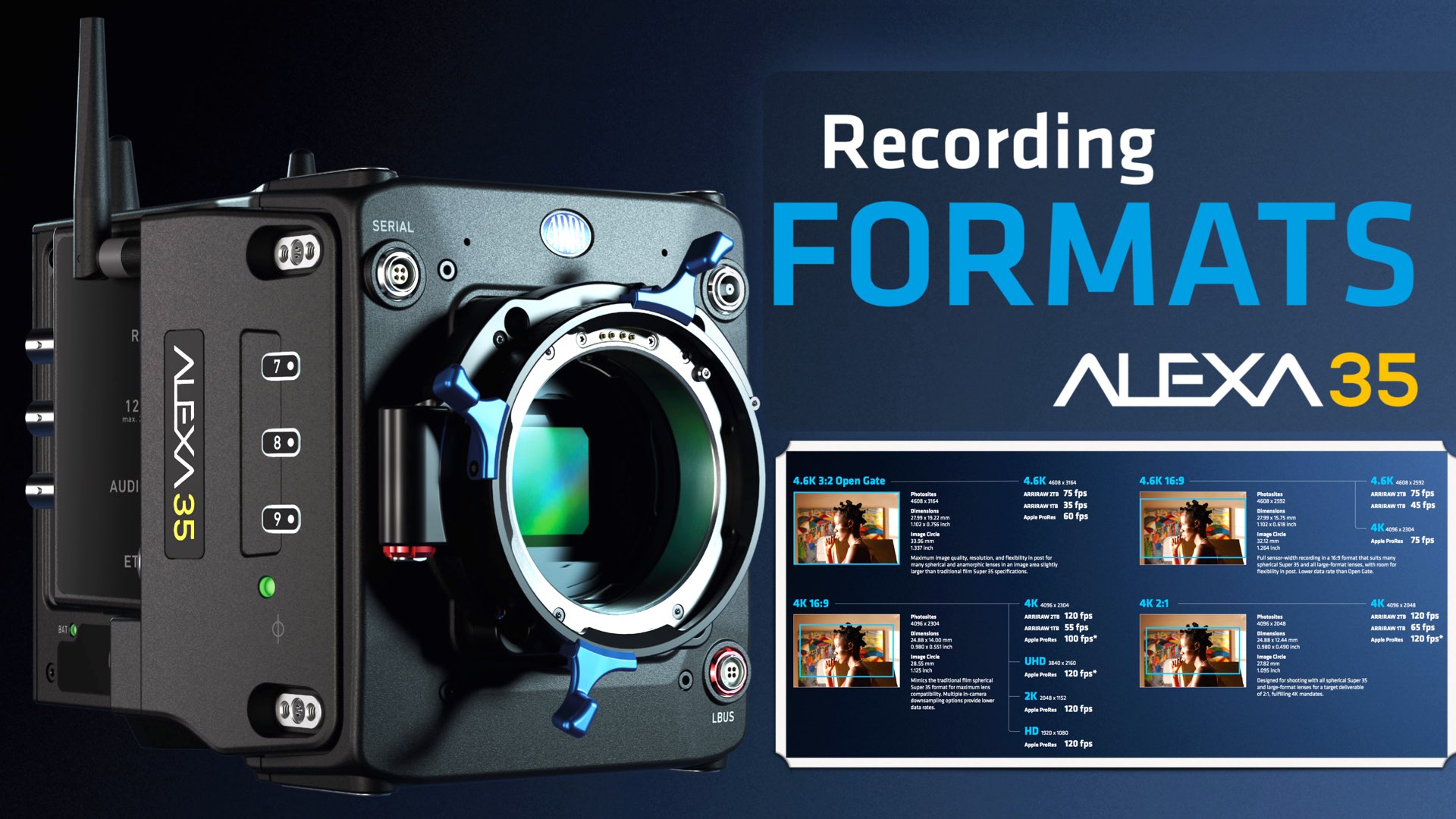
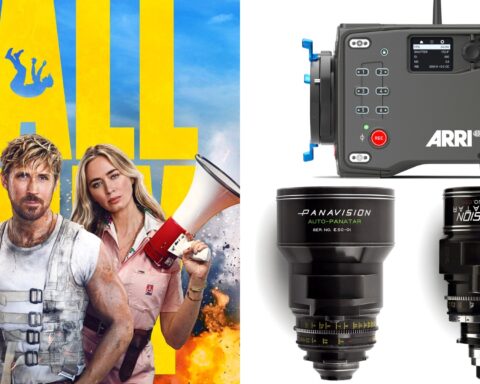

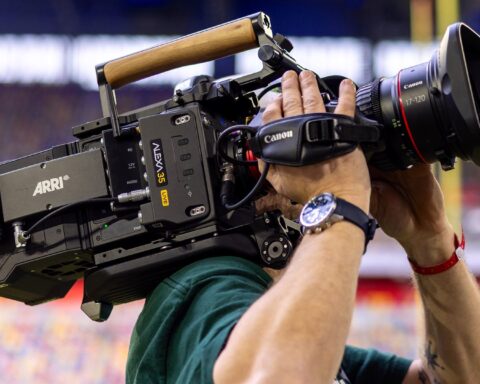

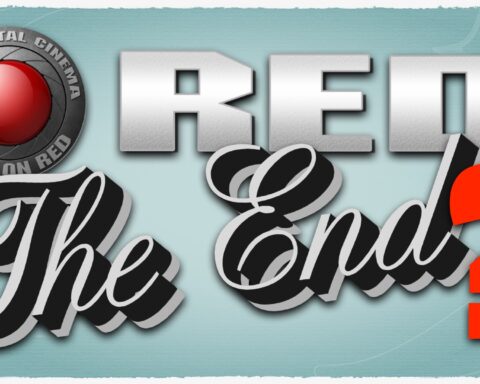


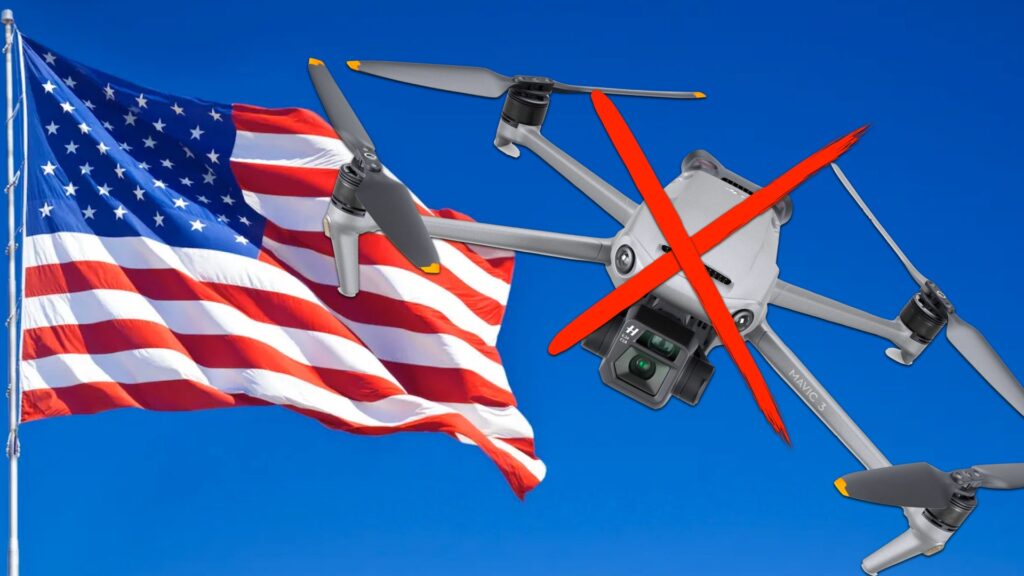
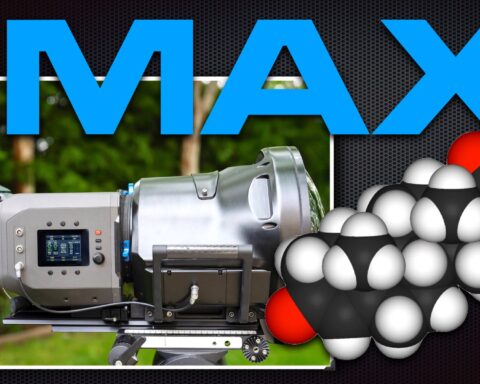




Whats the difference between Cinema DNG and ARRIRAW?
Both are unconpressed, unencrypted data.
I shoot DNG and indeed I get also around 30 mins for 1 TB at 4k..
ARRIRAW is 13Bit. The Cinema DNG isn’t holding 17 stops of information.
Theres not such thing as 13 bit or 16 bit. It’s all 12 bit in wrappers. Please look this up and stop spreading disinformation.
Arriraw according to testing holds more DR & has less moire than CDNG
CDNG was created by adobe. Arriraw was developed by Arri. So the main difference is brand.
ARRIRAW is the same as before?
Essentially, yes. We do a non-linear recording of the RAW images
and 512 digital numbers are allocated per exposure stop. But,
because in the new ARRIRAW we have to encode two more stops,
we need 1,024 more numbers in our range. That’s why we needed
to add one bit to the file format, so ARRIRAW is encoded in the
ALEXA 35 in 13-bit, whereas ARRIRAW is encoded in 12-bit in
in the ALEXA LF.
From Page 54 in this document :https://www.fdtimes.com/pdfs/free/115FDTimes-June2022-2.04-150.pdf
Harald Brendel is Head of the Center of Competence Image Science
in the Camera and R&D in Munich.
It’s not a matter of data rate. It’s all in the sensor. The sensor is very much different. Thus, it matters where you are getting that uncompressed data from.
Little mistake in the article I think: “4.6K 16:9 – Mimics the traditional lm spherical Super 35 format”
It should just be 4K and not 4.6K if I’m not mistaken?
Cheers
Corrected! Thank you!
Those ARRIRAW record times are ugly.